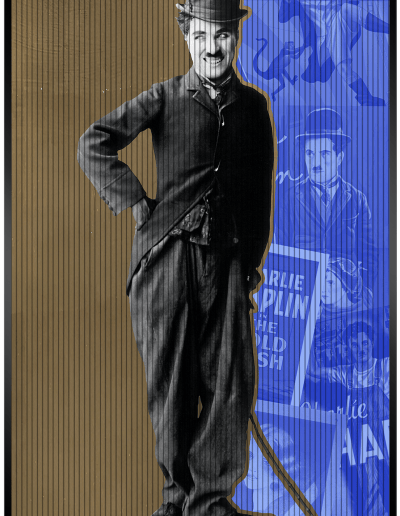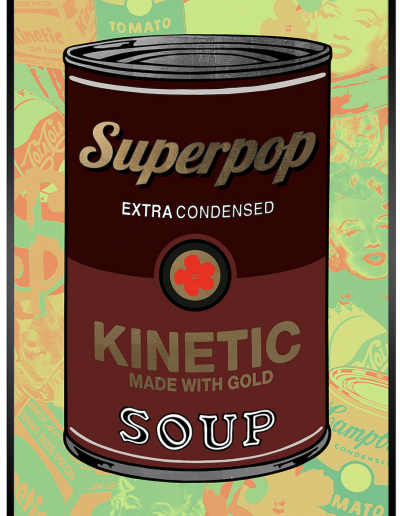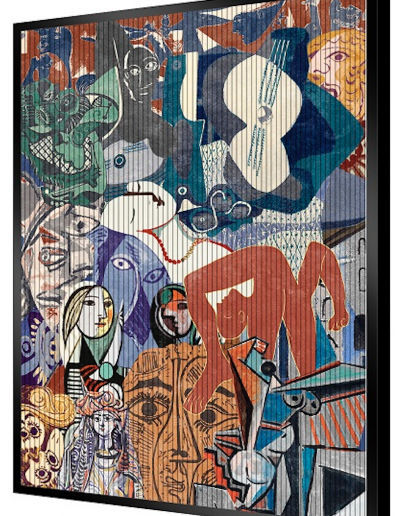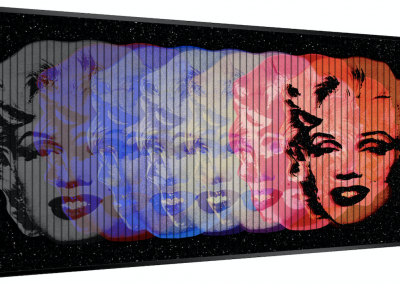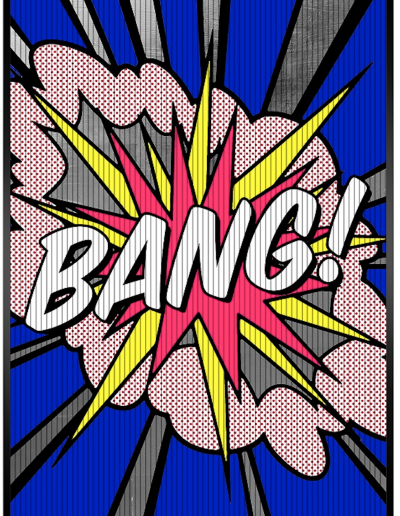PATRICK RUBINSTEIN–(FRANCE 1960)
PEINTRE
FR
Biographie
Patrick Rubinstein est né en 1960 à Paris.
Il grandit dans une famille qui le sensibilise à l’art. Il reçoit de sa mère sa passion du cinéma, et de son père un esprit inventif. C’est lui qui l’initie le premier aux techniques de l’art cinétique.
L’artiste puise ses thèmes dans le passé et le présent. Il cisèle ses œuvres comme un orfèvre. Et le résultat est saisissant : Patrick Rubinstein nous offre finalement une œuvre futuriste et avant-gardiste. Son œuvre est reconnue internationalement.
Concept
Patrick Rubinstein présente une œuvre associant les principes de l’Op art à ceux de l’art cinétique, exploitant ainsi la faillibilité de l’œil.
Ses sources d’inspiration sont multiples, au croisement de l’art contemporain, du Pop et du Street Art. Son œuvre est dynamique car le spectateur peut apprécier plusieurs images lorsqu’il se déplace autour d’elle. Le mouvement n’est pas le seul élément de variation de la perception. En effet, l’intensité lumineuse et de l’orientation de la lumière joue aussi sur l’effet cinétique de l’œuvre.
EN
Biography
Patrick Rubinstein was born in 1960 in Paris.
Growing up in a family that made him perceptive to art at an early age, Patrick Rubinstein acquired the passion for cinema from his mother, and inherited the inventive spirit from his father, who was also the first to introduce to him the techniques of kinetic art.
The artist draws his themes from both the past and the present. He meticulously sculpts and refines his artworks like a goldsmith. The outcome is mesmerizing: Patrick Rubinstein presents the viewer with a futurist and avant-gardist artwork. His work is recognized internationally.
Concept Overview
Patrick Rubinstein presents an artistic style that unites the principles of optical art and kinetic art, thus maximizing on the intricate sophistication of the eye. His source of inspiration is diverse, traversing that of contemporary art, pop art and street art. His work is dynamic as the spectator can see different images when observing it from different angles.
The movement is not the only element that affects visual variation, but the light direction and intensity also contribute to the artwork’s kinetic effect.







